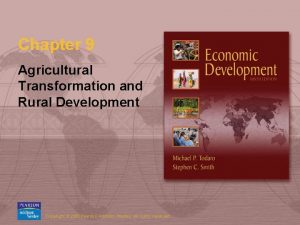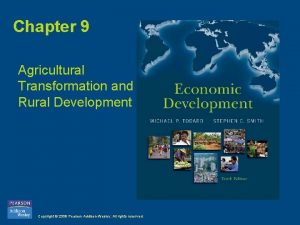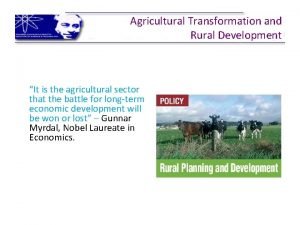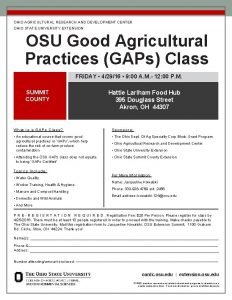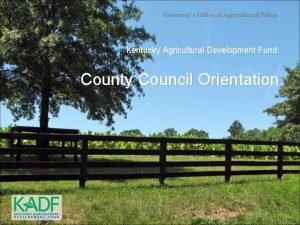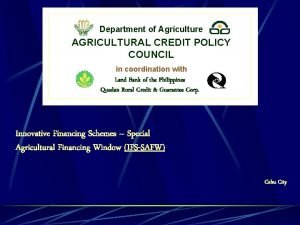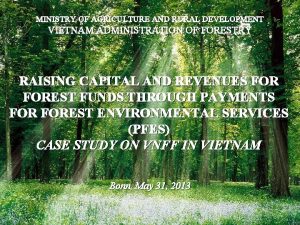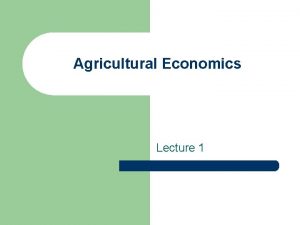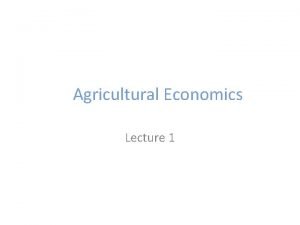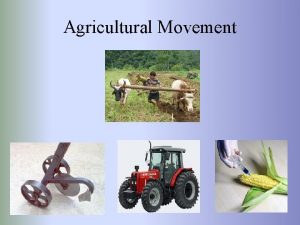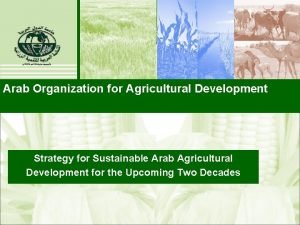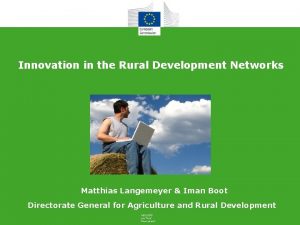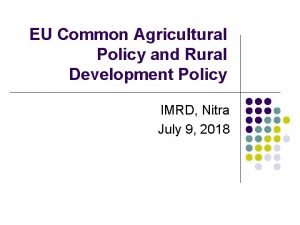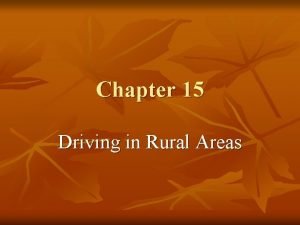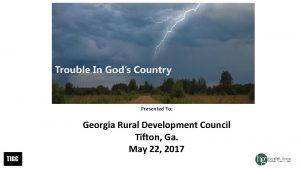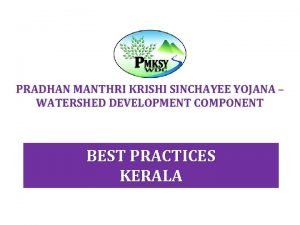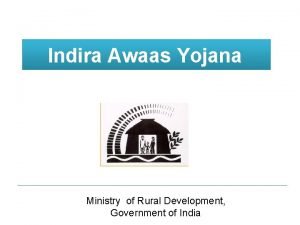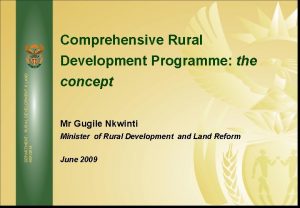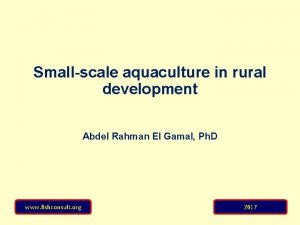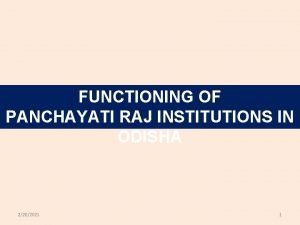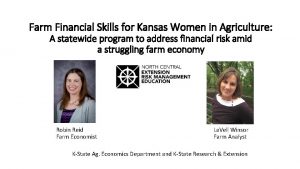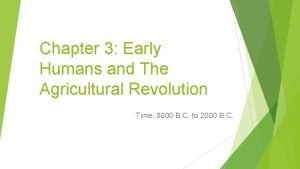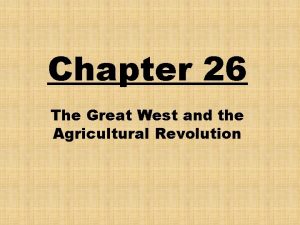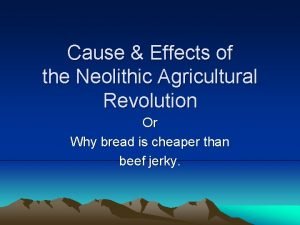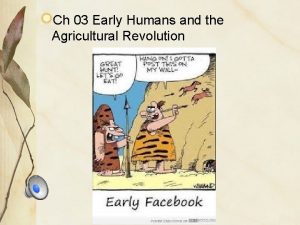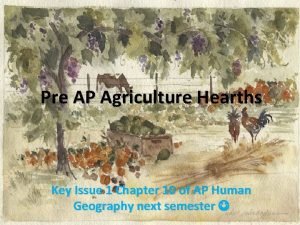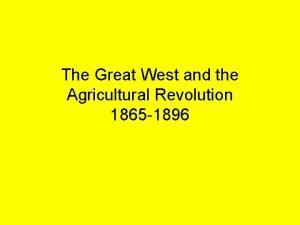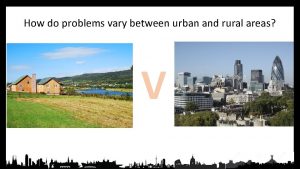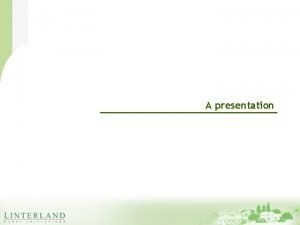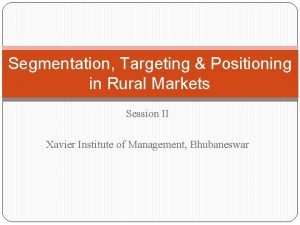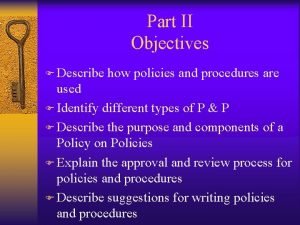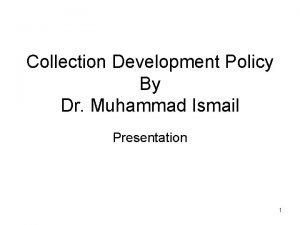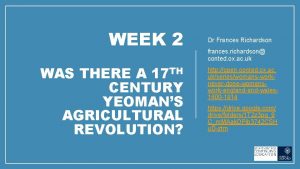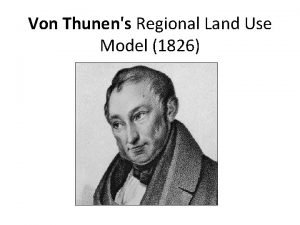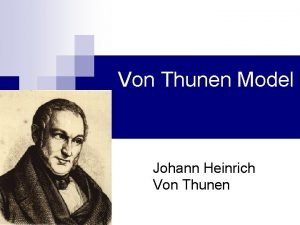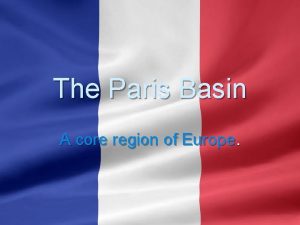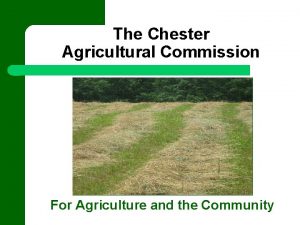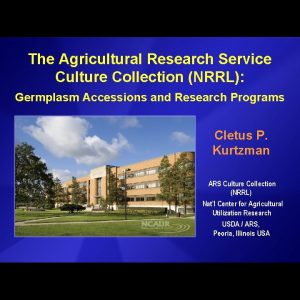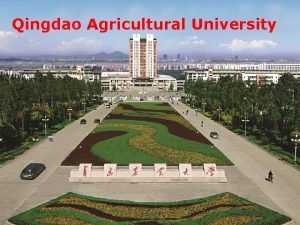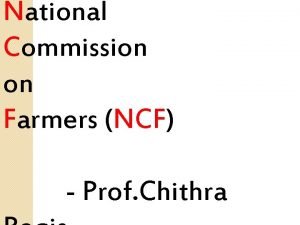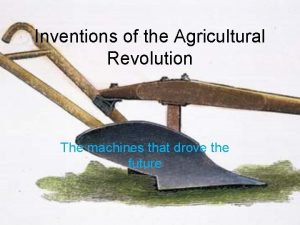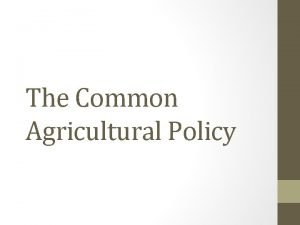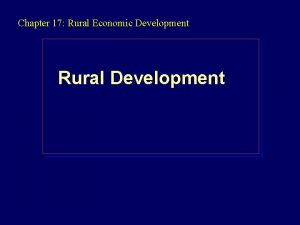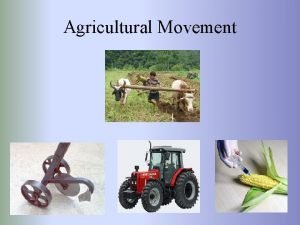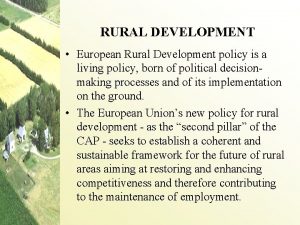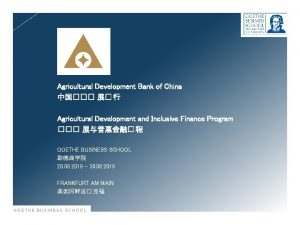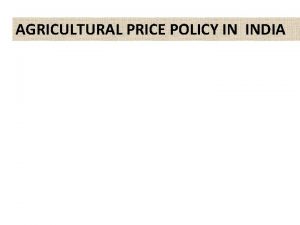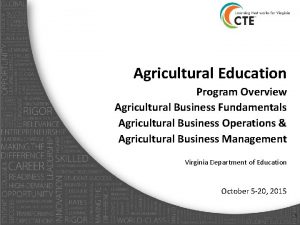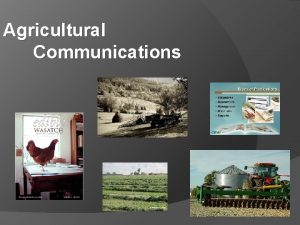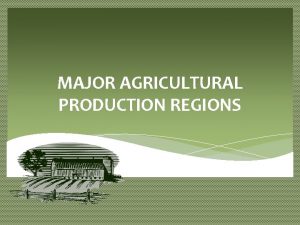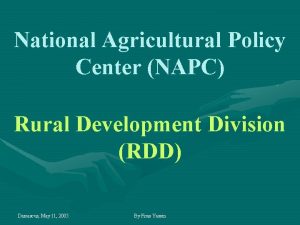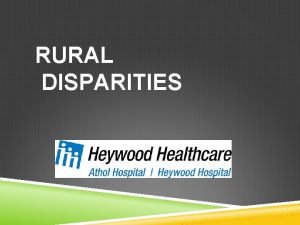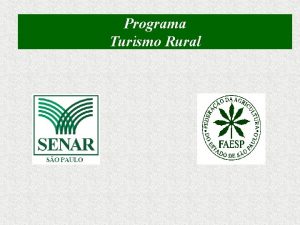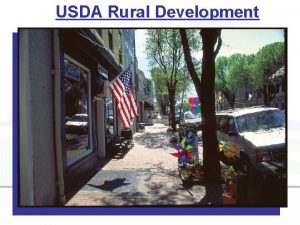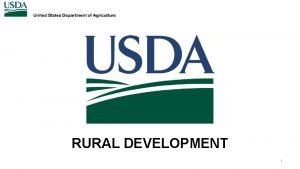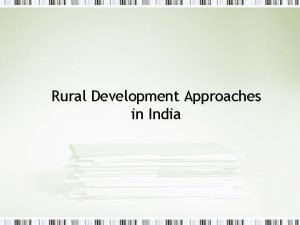EU Common Agricultural Policy and Rural Development Policy




















































- Slides: 52

EU Common Agricultural Policy and Rural Development Policy IMRD, Nitra July 9, 2018

Content EU budget EU Agriculture – basic figures CAP § § § Market regulation Rural development policy 2

History of EU budget 1 st model – contribution to the budget § France, Germany, Italy – 28%, Netherlands, Belgium – 7, 9%, Luxembourg – 0, 2% § § 1970 – 1 st Budget Treaty – 3 incomes of the budget § § § Tariffs from imports from 3 rd countries, Duties on agricultural imports from 3 rd countries and sugar and izoglucose, 1 % of VAT 3

History of EU budget § § § 1975 – 2 nd Budget Treaty, strenghtening of Parliament position – possibility of refusing the budget as whole 1 % of VAT up to year 1986 1, 4% of VAT from the year 1986 (1988) - introduced 4 th source of financing – GNI Nowadays – VAT – 0, 5% 4

Sources of EU budget 1988/2013


EU BUDGET 2014 -2020


EU AGRICULTURE AND COMMON AGRICULTURAL POLICY













Labor force in agriculture



CAP l l The EU's common policy is one of the oldest policies Budget of the policy is close to 44% of the total EU budget

CAP

l POLICY MAKERS ACQUIS OBJECTIVES PRINCIPLES INSTRUMENTS FUNDS

OBJECTIVES l l l to increase productivity, by promoting technical progress and ensuring the optimum use of the factors of production, in particular labour; to ensure a fair standard of living for the agricultural Community; to stabilise markets; to secure availability of supplies; to provide consumers with food at reasonable prices.

ACQUIS PRIMARY LEGAL SOURCES OF CAP SECONDARY LEGAL SOURCES

POLICY MAKERS l l EUROPEAN PARLIAMENT - AGRICULTURAL COMMITTEES EU COUNCIL - COUNCIL OF MINISTERS OF AGRICULTURE OF MEMBER STATES EU COMMISSION - DG AGRI COMMITTEE OF THE REGIONS, ETC.

ACTORS OF CAP - SR l l l MANAGING AUTHORITY PAYING AGENCY/INTERVENTION OFFICE COORDINATION OFFICE CERTIFICATION / AUDIT AUTHORITY OF TRANSFERS

OBJECTS OF CAP 1 st pillar: l Farmers (individual persons, legal persons) 2 nd pillar: l Farmers (individual persons, legal persons) l Food processing companies l Municipalities, LAG´s - CLLD. . .

COUNTRIES OF IMPLEMENTATION OF CAP 1958 (6) – 2007 (28) l l l l 1958: FR, DE, IT, NL, BE, LX 1973: DK, IRL, UK 1981: GR 1986: ES, PT 1995: AU, FI, SE 2004: CZ, H, PL, SK, SLO, EST, LAT, LTV, CYP, MT 2007: BG, R 2013: CR

PRINCIPLES OF CAP l l l Single market Preference of EC Financial solidarity

INSTRUMENTS OF CAP l l Policy instruments that have been dropped or are effectively defunct (e. g. target price; threshold price; variable import levy). Policy instruments that are still in place, but are likely to diminish in importance over time or in some cases disappear (intervention purchasing; export subsidies; quotas).

INSTRUMENTS OF CAP l l Relatively new policy instruments (decoupling; single farm payment; modulation; crosscompliance; financial discipline mechanism; IACS) – 2007 -2013 New Policy instruments – e. g. greening, young farmers support scheme, single payment scheme

FUNDS OF CAP l EUROPEAN AGRICULTURAL GUARANTEE FUND (EAGF) – 1 st pillar l EUROPEAN AGRICULTURAL FUND FOR RURAL DEVELOPMENT (EAFRD) – 2 nd pillar

CAP REFORMS

REFORM ADRIENSEN (1984) l l l milk quotas to limit and control production quota represented the ownership of individual member states overspend was penalized by the financial sanctions amounting to 115% of the indicative price of milk

MAC-SHARRY REFORM (1992) l l l direct payments to farmers - to compensate the reduction in prices of agricultural products paid per hectare of agricultural land or animal reductions in intervention prices - a gradual increase in rates of direct payments set aside incentives to encourage retirement of farmers over 55 years to take early retirement

AGENDA 2000 (1999) l l l Intervention price for cereals fell by 15 percent with the distribution of cuts in two years reduction in intervention prices for beef by 20 percent is spread over a period of three years Significant changes in the agri-environment support and support for rural development (2 nd pillar of CAP)

LUXEMBOURG REFORM (2003) l l l l Single farm payment Cancellation of coupled support for agricultural production (decoupling) Cross Compliance Set aside Modulation Rural Development Farm advisory system

Reform 2014 -2020 l Basic Payment Scheme l l Greening l l The Basic Payment Scheme is operated on the basis of payment entitlements allocated to farmers in the first year of application of the scheme and activated each year by farmers 30% of direct payments subject to the observation of farming practices that are beneficial for the environment and the climate, particularly crop diversification, maintenance of permanent grassland the establishment of 'Ecological Focus Area' on each farm. Redistributive payment l The option for MS to redistribute direct income support between farmers by using up to 30% of their national direct payments envelope for granting small farmers an extra payment for the first hectares on which they activate payment entitlements

Reform 2014 -2020 l Payment for young farmers l l The reform of the Common Agricultural Policy for the period after 2013 foresees that young farmers (farmers starting-up their farming activity and not older than 40 in the year of application) eligible for the basic payment may receive a payment under the young farmers scheme for a maximum period of five years. The payment is 25% of the basic payment. Member states can choose to allocate up to 2% of their direct payment envelope to these payments Degressivity

Changes in the Distribution of Direct Payments


RURAL DEVELOPMENT POLICY

Zdroj: DG AGRI

Objectives Support for rural development, including for activities in the food and non-food sector and in forestry, shall contribute to achieving the following objectives: l a) fostering the competitiveness of agriculture; l b) ensuring the sustainable management of natural resources, and climate action; l c) achieving a balanced territorial development of rural economies and communities including the creation and maintenance of employment.

Focusing areas

Zdroj: DG AGRI

Contact Pavol Schwarcz Faculty of EU Studies and Regional Development Department of EU Policies pavol. schwarcz@uniag. sk pavolschwarcz@gmail. com
 Chapter 9 agricultural transformation and rural development
Chapter 9 agricultural transformation and rural development Chapter 9 agricultural transformation and rural development
Chapter 9 agricultural transformation and rural development Agricultural transformation and rural development
Agricultural transformation and rural development Ohio agricultural research and development center
Ohio agricultural research and development center Kentucky agricultural development fund
Kentucky agricultural development fund Credit safw
Credit safw Ministry of agriculture and rural development cameroon
Ministry of agriculture and rural development cameroon Ministry of agriculture and rural development vietnam
Ministry of agriculture and rural development vietnam What is agricultural development
What is agricultural development What is agricultural development
What is agricultural development Stages of agriculture
Stages of agriculture Arab organization for agricultural development
Arab organization for agricultural development Rural development
Rural development Rural development
Rural development Rural areas have of development drivers ed
Rural areas have of development drivers ed Usda rural development tifton ga
Usda rural development tifton ga Pradhan mantri krishi sinchayee yojana in kerala
Pradhan mantri krishi sinchayee yojana in kerala Ministry of rural development
Ministry of rural development Comprehensive rural development programme
Comprehensive rural development programme Kaavil farmfresh spices
Kaavil farmfresh spices Zilla parishad
Zilla parishad Rural development loan massachusetts
Rural development loan massachusetts Lcm of 12 and 18
Lcm of 12 and 18 Common anode and common cathode
Common anode and common cathode Common factors and common multiples
Common factors and common multiples What are the factors for 54
What are the factors for 54 Common factors of 12 and 42
Common factors of 12 and 42 Multiples of 9 and 21
Multiples of 9 and 21 Hfojobs
Hfojobs Agricultural accounting and finance kansas
Agricultural accounting and finance kansas Chapter 3 early humans and the agricultural revolution
Chapter 3 early humans and the agricultural revolution Chapter 26 the great west and the agricultural revolution
Chapter 26 the great west and the agricultural revolution Neolithic revolution cause and effect
Neolithic revolution cause and effect Early humans and the agricultural revolution answer key
Early humans and the agricultural revolution answer key Agricultural hearth map
Agricultural hearth map The great west and the agricultural revolution
The great west and the agricultural revolution Urban rural difference
Urban rural difference Urban and rural definition
Urban and rural definition Grade 12 geography settlement
Grade 12 geography settlement Rural market segmentation
Rural market segmentation Policy development steps
Policy development steps Collection development policy
Collection development policy The agricultural revolution
The agricultural revolution Von thunen model frq
Von thunen model frq Von thunen model
Von thunen model Limon soil france
Limon soil france Chester agricultural center
Chester agricultural center Nrrl culture collection
Nrrl culture collection Ffa to practice brotherhood
Ffa to practice brotherhood Qingdao agricultural university
Qingdao agricultural university Agriculture renewal action plan
Agriculture renewal action plan To practice brotherhood ffa
To practice brotherhood ffa Agricultural revolution inventions
Agricultural revolution inventions
